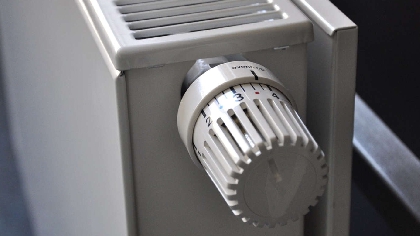
Greater Manchester has one of the highest rates of homes without central heating, figures show. Some 17,440 households are living in freezing conditions, it is estimated.
And more than 1,450 homes in Tameside have no heating.
The figures are drawn from the latest ONS census, which revealed a ‘shocking’ amount of fuel poverty in England and Wales. It found that more than 367,000 houses were without heating. That’s 1.48 per cent of the 24.8m homes in England and Wales.
A lack of central heating is classified by the ONS as one of the key indicators of poverty, meaning that many of those captured in the census are likely to be facing other financial hardships at the same time.
The ONS said: “While households without central heating may have other ways of heating their homes, a lack of central heating is one of the characteristics used in our Census 2021 data to identify potential household deprivation.”
Manchester has the fourth highest number of homes bracing the winter months without central heating in England and Wales, with 4,884 and almost 2.3 per cent of households. But Salford’s (1,952 households) percentage is also above the national average at 1.7 percent of homes.
Meanwhile, 1.5 percent of all houses in Bolton (1,747 households) and Tameside (1,456) have no heating, while it’s around 1.3pc of homes in Bury (1,035), Rochdale (1,144) and Stockport (1,570).
There are 1,160 homes with no central heating in Trafford and 1,109 in Oldham, with around 1.2 per cent of households having to find alternative means to keep their homes warm in the winter.
Coun Ged Cooney, the Greater Manchester Combined Authority’s (GMCA) lead on housing and leader of Tameside council, said: “It’s a damaged statistic in this day and age. You’d expect living standards to be going up and everyone to have decent housing. We’re appalled, especially when you think of how cold it’s been in the last week.
“But there’s a prosperity issue here too – because sometimes even those that have central heating are too frightened to turn it on because the bills are so expensive. And it’s not just about heating either – it’s about insulation, accurate thermostats, modernised heating systems. We need to tackle all of it.”
He noted that the GMCA is planning to drive up minimum standards on heating and insulation provisions in the private sector using the new Good Landlord Charter. Andy Burnham wants the charter, a voluntary accreditation scheme that recognises good landlords, to come alongside a new ‘right’ for renters to have their houses checked for quality.
And families using other means to heat their homes, such as electric space heaters, can quickly find themselves stuck in a cost spiral. Savings experts have found that even with inflated energy costs, space heaters can be almost twice as expensive to run.
These cost spirals can increase the likelihood that a household faces fuel poverty, which charities like National Energy Action define as ‘a household that needs to spend 10 per cent or more of its income on energy in order to maintain a satisfactory heating regime’.
Councillor Joanna Midgley, deputy leader of Manchester Council said: “It is a sad indictment of the current political and economic climate that in 2024 there are thousands of people in Manchester living in fuel poverty. As a Council we remain committed to supporting anyone who is struggling during the cost of living crisis, and we would urge anyone who may be struggling to come forward and allow us to help.”
But Manchester is not the only city with figures showing above average levels of homes without central heating. Birmingham has the highest number of homes without central heating of any of the 332 local authorities in England and Wales.
A total of 9,995 homes lack central heating, which is 2.4 per cent of all households in the city. Birmingham Yardley Labour MP Jess Phillips said the levels of fuel poverty in the city are ‘shocking’.
She said: “The idea that there are still houses in Birmingham that still don’t have any central heating or double glazing would seem shocking to people who care about this. The levels of fuel poverty, certainly in the areas that I represent, are worsening everyday, and are high above the national average”
Birmingham is followed by Cornwall, where 8,776 homes (3.5 per cent) are lacking central heating, and then Leeds with 7,383 households. Manchester is fourth highest.
The statistics identify the Ladywood area of Birmingham as the local ward with the highest number of homes lacking central heating.
However, six of the ten wards recording the highest number of homes without central heating are in Leeds.
Apart from the remote Scilly Isles, the local districts with the highest percentage of homes that lack central heating are the Pen draw Llŷn and Corris a Mawddwy areas of Gwynedd in North Wales. In both of these areas more than one in 12 homes lack central heating.


 Ellie receives Young Citizen of the Year Award 2025
Ellie receives Young Citizen of the Year Award 2025
 Think! Fatal 4 Offences
Think! Fatal 4 Offences
 Stalybridge Station 'Eggs'cels with Pupils' Easter Artwork
Stalybridge Station 'Eggs'cels with Pupils' Easter Artwork
 Man sentenced to life imprisonment following a campaign of abuse against a woman
Man sentenced to life imprisonment following a campaign of abuse against a woman

